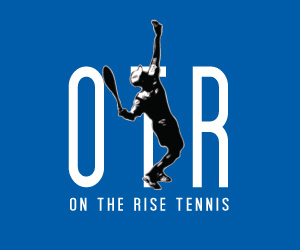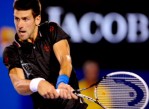
The aim of this article is to enable tennis players of all levels to see through the myths and fallacies that surround conditioning for tennis and to present strategies that they can incorporate into their own training programs. After each point there is a So What? Section. If you only have a few moments skip to these take home points.
At first glance it is difficult to pinpoint the physical attributes that make a great tennis player. Serena Williams is a brutish force of nature, muscled and dense whilst Maria Sharapova is more elfin and lithe. Different styles and builds both enjoy success at the highest levels. Who to emulate? Making things harder still is the fact that Tennis is an untimed game; a match may be finished in a decisive half hour or might be drawn out over the best part of 5 hours.[i]
So how do you train for such a potential variety of duration? Analysis has shown that the typical point in tennis involves between 3 and 7 changes of direction and obviously, due to the size of the court, the longest distance covered in a single direction is 30yards.[ii]
There is no point in training over longer distances than those involved in the game: running over 30yards is utterly redundant for tennis players. Any tennis player looking for an edge would be best served making these 3-7 changes of direction as efficient as possible. The average point lasts for 6 seconds with most points lasting no more than 10 seconds and the work to rest ratio is between 1:2 to 1:5[v]Tennis is an intermittent stop start sport: prepare accordingly or prepare to be dominated by those who do.
Given the dimensions of the court, the frequent changes of direction and the work to rest intervals it would be wise to conclude that traditional methods of conditioning for tennis, which seem to centre on long duration steady state cardio and mimicry of tennis shots using resistance do not address the demands of the sport in a specific manner.
Deceleration is king. When training for tennis we are looking to build an athlete capable not only of reaching top speed quickly but decelerating and changing direction.
A popular analogy for the importance of deceleration involves Cars. How fast would you drive a car that had no brakes? How fast would you drive that car on a tennis court?
So What?
The quickest way to improve tennis performance is to train the brakes.
7 performance enhancing tips to improve your game
1.Achieve structural balance
Ensuring that the muscles on both sides of a joint are in balance with one another will make you far less injury prone and will improve your performance. If your strength training program is unbalanced and consists of mostly training the muscles you can see in the mirror then you are placing yourself at a far greater risk of injury.
So what?
Have a structural balance assessment from a qualified PICP coach.
2. Use Tempo in your Strength Training
Tempo means the speed at which you lift the weight during a repetition. Different tempos can elicit different responses altering the nature of the adaptation. Adherence to tempo guidelines means that the eccentric (lowering phase) will receive due attention. The eccentric portion is often neglected by trainees who lower the weight as quickly as possible in order to eke out more repetitions from a particular set. During the eccentric portion the muscle “lengthens whilst producing tension, thus braking, slowing or controlling the movement.”[vi] This methodical approach ensures that muscles are trained in a manner that prepares the athlete for the specific muscular contractions they will encounter in their sport.[vii] Hamstrings that have been trained eccentrically will be less prone to tears.[viii] If you over emphasize the concentric portion of training- acceleration- and fail to properly train the eccentric- deceleration- then you are building an athlete with no brakes.[ix][x] Be aware that pure eccentric work utilizing supra-maximal loads should not be undertaken until 2 years of regular training have been completed.[xi]
So what?
Focus on training both the concentric and eccentric portion of traditional strength exercises.
3. Train the posterior chain
Tennis players should spend a large amount of time training the muscles of the posterior chain with a focus on the eccentric portion of the exercise: the glutes and hamstrings in particular. Leg extensions will no longer cut it; hamstring curls, glute-ham raises, back extensions, Romanian deadlifts and Good Mornings are the order of the day.[xii]
So what?
Train your glutes, lower back and hamstrings.
4. Train the shoulders- properly.
Stop using a cable machine to practice your serve and backhand. This will have zero transfer to your tennis game and will screw up your mechanics. Instead use the cable machine for training your external rotators. The typical training session that I witness in commercial gyms involves Bench Press for 45 minutes followed by Lat Pulldowns for a few sets. Both of these movements internally rotate the shoulder joint, creating a rounded Neanderthal posture. Training the posterior shoulder muscles will create a balanced shoulder joint that effectively decelerates the racket arm. Training the shoulder using a variety of external rotation movements, scapular retractions and rows has been shown to reduce injuries in tennis players.[xiii]
So what?
Incorporate remedial shoulder exercises such as External Rotations, Powell raises, and Trap 3 variations into your strength training program.
5. Train Unilaterally
Tennis players are particularly likely to suffer structural imbalances due the one sided nature of the sport.[xiv] Therefore it is vital that unilateral training is incorporated into the training programs of elite and recreational players alike. Unilateral training means single limb- so dumbbells would be used preferentially over barbells in upper body pressing movements (this would also engage the shoulder stabilizers to a greater degree). For the lower body this would mean performing Single Leg work such as Split Squats and Step Ups in addition to or instead of exercises such as Front Squats depending on the level of the athlete.[xv]
So what?
Use single limb training to even out discrepancies between the dominant and weaker sides of the body.
6. Train for Functional Hypertrophy
Don’t be scared of lifting weights. Don’t worry that you will become muscle bound and inflexible. You need to lift progressively heavier weights in order to get stronger. Functional Hypertrophy does not mean using TRX and Bosu balls, but rather “muscle mass that contributes directly to sports performance or the activity you are training for.”[xvi]So, as we have discussed the areas needing most hypertrophy for tennis are the decelerators- the hamstrings, glutes and the muscles of the rotator cuff. If you hypertrophy and strengthen the muscles most involved in your sport you will find yourself changing direction on court with less exertion. Increasing your strength levels will have a trickle down effect simultaneously increasing muscular endurance.
So what?
Hypertrophy the muscles most involved in your sport and their antagonists.
7. Improve your Body Composition
Remember the car analogy? Carrying excess body fat is the equivalent of filling the boot of the car with bricks. Improved Body Composition is of paramount importance for tennis players. This means increasing the lean mass of the body- by using functional hypertrophy methods- and decreasing body fat levels. A tennis player with high body fat levels will have a more difficult time accelerating than their leaner opponent. They will also generate more momentum owing to their greater mass, which in turn will make deceleration more difficult.[xvii] Effective and targeted training is one aspect of improved Body Composition, the other involves repetitions with a knife and fork. Proper nutrition is vital for losing body fat.
So what?
Support your training with an intelligently designed nutrition plan. Don’t be a hero on the court and a wimp in the kitchen.
Looking for the most efficient way to improve your game, get fit, look great and feel sharp this winter? RAW Personal Training studio offers tailor-made fitness regimes that ensure optimal results in minimal time. With a team of certified, experienced and friendly personal trainers to help guide and motivate you, reaching your fitness goals has never been easier.
Conveniently located on Wyndham St in Central, the RAW Personal Training studio is open from 7am – until late 6 days a week. For more information, visit:
[i]Kovacs MS. Tennis physiology: training the competitive athlete. Sports Med 37: 1-11, 2007.
[ii] Weber K, Pieper S, and Exler T. Characteristics and significance of running speed at the Australian Open 2006 for training and injury prevention. Med Sci Tennis 12: 14-17, 2007.
[iii] Kovacs M. Energy system-specific training for tennis. Strength Cond J 26: 10-13, 2004.
Kovacs MS. A comparison of work/rest intervals in men’s professional tennis. Med Sci Tennis 9: 10-11, 2004.
[v] Roetert EP and Ellenbecker TS. Complete Conditioning for Tennis (2nd ed.). Champaign, IL: Human Kinetics, 2007.
[vi] Poliquin, Charles C.S.C.S.; Patterson, Paul, TERMINOLOGY: Classification of strength qualities. National Strength Cond Journal: December 1989 – Volume 11 – Issue 6 – ppg 48-52
[vii] Kovacs MS, Roetert EP, and Ellenbecker TS. Efficient deceleration: The forgotten factor in tennis-specific training. Strength Cond J 30: 58-69, 2008.
[viii] Brockett CL, Morgan DL, and Proske U. Predicting hamstring strain injury in elite athletes. Med Sci Sports Exerc 36: 379-387, 2004.
[ix] Garrett W. Muscle strain injuries. Am J Sports Med 24: S2-S8, 1996.
[x] Proske U, Morgan DL, Brockett CL, and Percival P. Identifying athletes at risk of hamstring strains and to protect them. Clin Exp Pharmacol Physiol 31: 546-550, 2004.
[xi] Poliquin C. Five steps to increase the effectiveness of your strength training program. NSCA J 10(3): 34-39, 1988.
[xii] Kovacs MS, Roetert EP, and Ellenbecker TS. Efficient deceleration: The forgotten factor in tennis-specific training. Strength Cond J 30: 58-69, 2008.
[xiii] Niederbracht, Y., Shim, A., Sloniger, M., Paternostro-Bayles, M., Short, T. Effects of Shoulder Injury Prevention Strength Training Program on Eccentric External Rotator Muscle Strength and Glenohumeral Joint Imbalance in Female Overhead Activity Athletes. Journal of Strength and Conditioning. 2008. 22(1), 140-145.
[xiv]http://www.charlespoliquin.com/Blog/tabid/130/EntryId/483/Tip-130-Strategic-Programming-Use-Unilateral-Lifts-After-Large-Muscle-Group-Lifts-for-Optimal- Anabolic-Response.aspx
[xv]http://www.poliquingroup.com/
[xvi]http://www.charlespoliquin.com/ArticlesMultimedia/Articles/Article/426/Is_Functional_Hypertrophy_the_Key_to_Athletic_Perf.aspx
[xvii] Kovacs MS, Roetert EP, and Ellenbecker TS. Efficient deceleration: The forgotten factor in tennis-specific training. Strength Cond J 30: 58-69, 2008.






